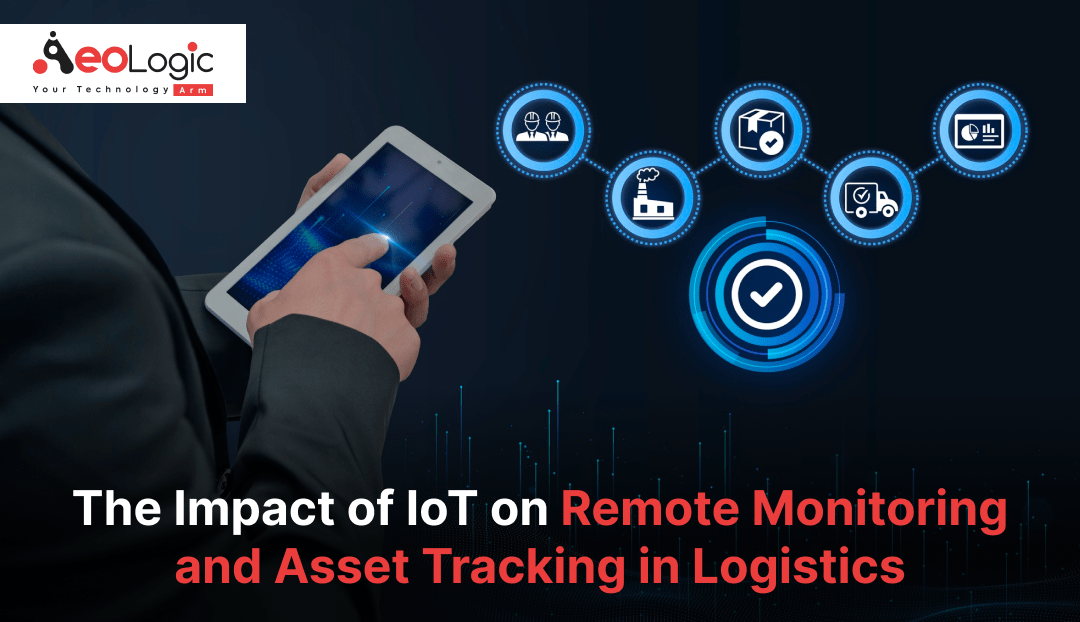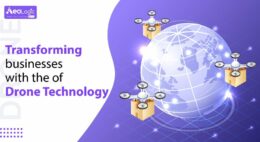Logistics management is crucial as it can pave the path to success for the organization if done properly. Bad logistics management could also cause large losses for the organization. The process of organizing, carrying out, and overseeing the flow and storage of products, services, and data along the supply chain is known as logistics. It includes several tasks, including distribution, order fulfillment, inventory management, warehousing, and transportation.
Monitoring and asset tracking are critical in logistics as this can give proper information about the assets, how they work, and what changes could be made to improve any weak points. This can help organizations to improve overall efficiency. But without the interference of any technology, it is not possible to access monitoring and asset tracking in logistics in this modern and advanced world. There are many technologies but only a few have those abilities that can enhance monitoring and tracking.
Overview: IoT on Remote Monitoring in Logistics
IoT is the technology among all other technologies that have special ability for sensing, tracking, and monitoring, also used by various organizations for monitoring and asset tracking in their logistics. This technology is also very compatible with integration with other technologies which makes it more incredible. IoT has served the world from early and has gained a good competitive position in the global market as the global Internet of Things (IoT) market size was valued at USD 595.73 billion in 2023. The market is projected to grow from USD 714.48 billion in 2024 to USD 4,062.34 billion by 2032, exhibiting a CAGR of 24.3% during the forecast period.
Through improved inventory management, predictive maintenance, and real-time visibility of commodities, IoT solutions have completely changed remote monitoring and asset tracking in logistics. IoT devices, such as RFID tags and GPS trackers, facilitate data-driven decision-making, effective supply chain coordination, and enhanced security measures, all of which lower costs and boost operational effectiveness.
IoT-Based Asset Tracking and Monitoring Market Size and Growth. The global IoT-based asset tracking and monitoring market size was USD 4.12 billion in 2023, accounted for USD 4.47 billion in 2024, and is expected to reach around USD 9.23 billion by 2033, expanding at a CAGR of 8.4% from 2024 to 2033.
In this article, we will see the role of IoT for monitoring and asset tracking in logistics. We will also see some interesting details like benefits, challenges, etc, and provide you with a sum-up paragraph at the end.
Also Read: The Role of IoT in Enhancing Asset Management
What Is IoT on Remote Monitoring and Asset Tracking In Logistics?
IoT in remote monitoring and asset tracking in logistics refers to the use of linked devices and sensors to collect and send data about the movement and condition of commodities throughout the supply chain. Asset whereabouts, inventory levels, and shipment conditions (e.g., temperature and humidity) may all be seen in real-time with these Internet of Things devices, which include GPS trackers, RFID tags, and environmental sensors.
Logistics aspects in the organization may improve security, optimize operations, improve inventory management, and remotely monitor assets by utilizing IoT technologies. There are a few other benefits that we will see later in the upcoming paragraph. 
Benefits of IoT on Remote Monitoring and Asset Tracking in Logistics
![]()
There are many benefits of IoT in remote monitoring and asset tracking in logistics. Here are a few top benefits mentioned below.
Real-Time Visibility
Real-time visibility is an important benefit of IoT that enhances remote monitoring and asset tracking in logistics. With the manual tracking and monitoring method, only past recorded data can be accessed and it is not possible to see it in real time. Where IoT devices improve supply chain in logistics transparency by continuously updating the location and condition of assets.
Predictive Maintenance
Predictive maintenance is also a very important benefit of IoT while remote monitoring and asset tracking in logistics. There are large machines and systems to manage logistics operations that could anytime fail. IoT’s ability to detect machine conditions can save the cost of repairing machines after too much damage. IoT sensors keep an eye on the state of the equipment, enabling prompt maintenance that lowers repair costs and downtime.
Also Read: IoT-Based Safety Monitoring System For Construction Workers
Data-Driven Insights
Integration of AI with the IoT could further enhance logistics management while doing monitoring and asset tracking. Decision making is very important in any organization and it should be data-driven decision-making for the benefit of the organization. Better decision-making, trend identification, and route and operation optimization are made possible by data analysis and analytics from AI and IoT.
Enhanced Security
In logistics management, many assets have to stay in a limited area. But sometimes, there could be theft and it cannot be detected if there is not any proper tracking system. Where IoT technology-based tracking systems can improve asset security. Real-time monitoring can assist in promptly responding to possible security breaches, and features such as geofencing can set off alarms if an asset leaves a specified area.
Sustainability
While tracking assets with technology is also important to maintain sustainability, IoT technologies can help reduce carbon footprints and support sustainability initiatives through route optimization and fuel consumption reduction. More ecological operations are also supported by tracking energy consumption in cars and warehouses.
Related Blog: How IoT Solutions Drive Innovation Across Industries
Challenges with IoT while Implementing Remote Monitoring and Asset Tracking in Logistics
We have gone through various benefits of IoT for remote monitoring and asset tracking in logistics. But there are some challenges too as there are a few mentioned below.
-
- Integration with the legacy system of IoT can be a challenging thing as it takes some time which results in downtime for the organization.
-
- Maintenance could be another challenge as IoT systems and devices need constant maintenance, which calls for specialized knowledge and resources.
-
- IoT mostly works with the Internet, so implementing an IoT-based system in a region with unstable internet connectivity can be challenging.
Also Read: RFID Asset Management Solutions for Your Operation
Final Words
IoT-based asset tracking and monitoring in logistics is a game-changing development that improves supply chain efficiency, visibility, and decision-making. Businesses may increase customer happiness, cut expenses, and optimize operations using IoT to provide real-time data on asset location, condition, and inventory levels.
There are a few challenges like internet connectivity, maintenance, initial investment, etc but worth it after implementation. Technology’s ability to bring innovation and optimize logistics procedures will only advance with time as it develops further, setting businesses up for success in a market that is becoming more and more competitive.






